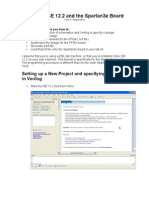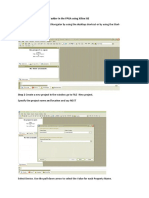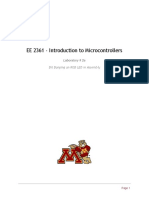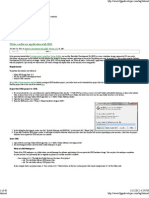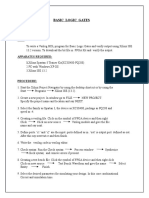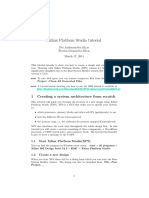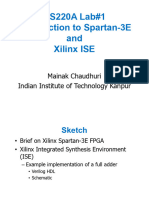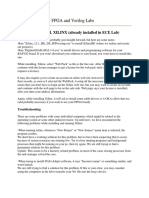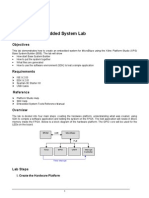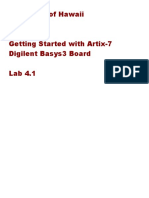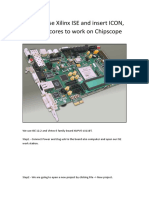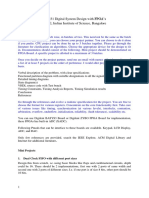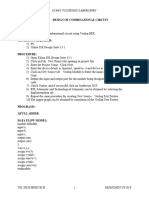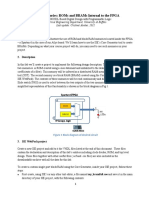0% found this document useful (0 votes)
44 views8 pagesPorting Guide For OpenADC
To port the OpenADC code to a new FPGA, the developer must:
1) Obtain the code from GIT and create a project in Xilinx ISE Project Navigator.
2) Add the necessary source files, including the top level interface file and files in the Spartan6 subdirectory.
3) Generate the fifoonly_adcfifo module using ISE CoreGen by selecting the native interface type, independent clocks with block RAM, and other settings.
4) Configure the synthesis properties to point to the include directory and run synthesis to identify errors.
Uploaded by
anhxcoCopyright
© © All Rights Reserved
We take content rights seriously. If you suspect this is your content, claim it here.
Available Formats
Download as PDF, TXT or read online on Scribd
0% found this document useful (0 votes)
44 views8 pagesPorting Guide For OpenADC
To port the OpenADC code to a new FPGA, the developer must:
1) Obtain the code from GIT and create a project in Xilinx ISE Project Navigator.
2) Add the necessary source files, including the top level interface file and files in the Spartan6 subdirectory.
3) Generate the fifoonly_adcfifo module using ISE CoreGen by selecting the native interface type, independent clocks with block RAM, and other settings.
4) Configure the synthesis properties to point to the include directory and run synthesis to identify errors.
Uploaded by
anhxcoCopyright
© © All Rights Reserved
We take content rights seriously. If you suspect this is your content, claim it here.
Available Formats
Download as PDF, TXT or read online on Scribd
/ 8

